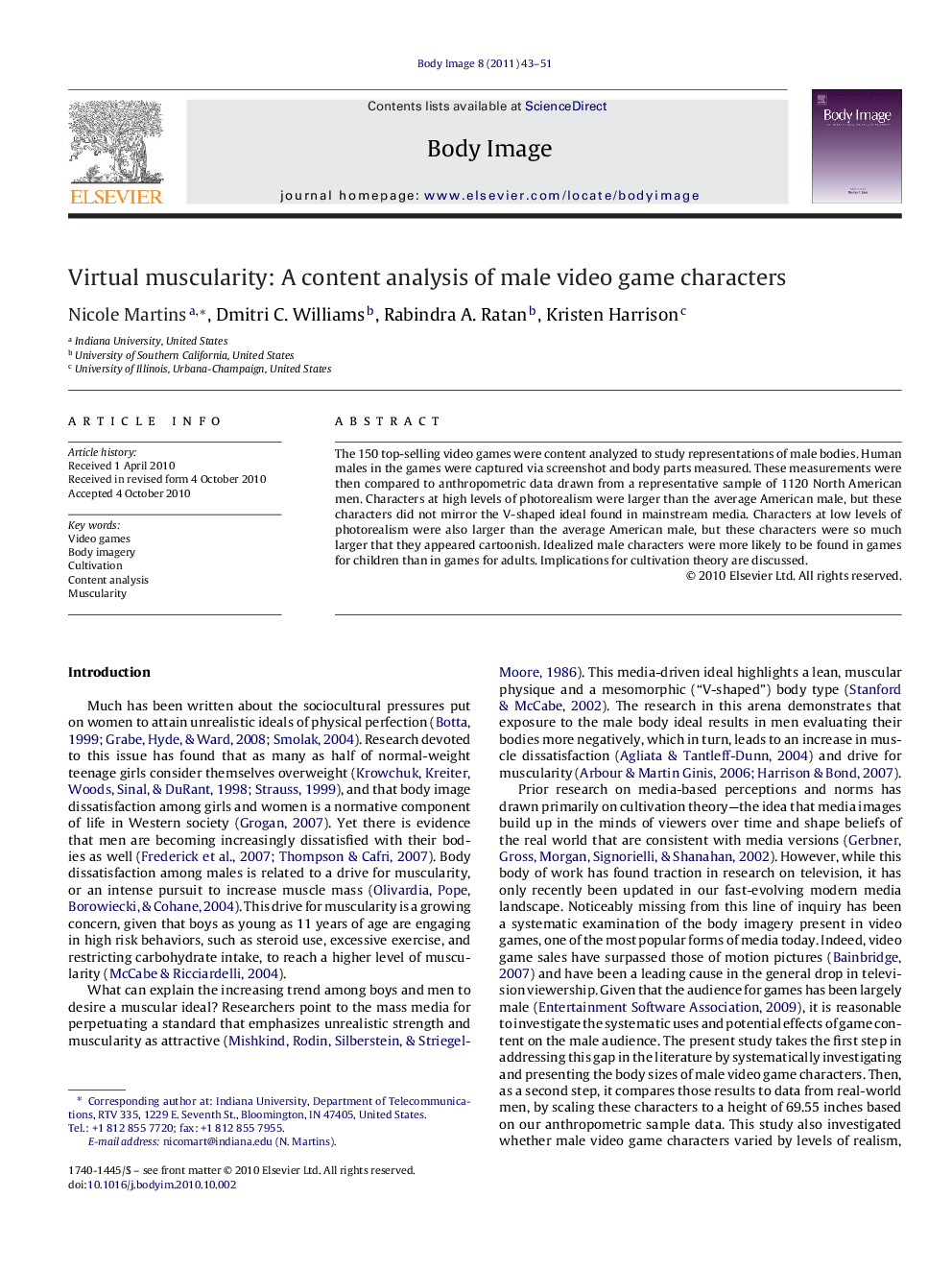| Article ID | Journal | Published Year | Pages | File Type |
|---|---|---|---|---|
| 903035 | Body Image | 2011 | 9 Pages |
The 150 top-selling video games were content analyzed to study representations of male bodies. Human males in the games were captured via screenshot and body parts measured. These measurements were then compared to anthropometric data drawn from a representative sample of 1120 North American men. Characters at high levels of photorealism were larger than the average American male, but these characters did not mirror the V-shaped ideal found in mainstream media. Characters at low levels of photorealism were also larger than the average American male, but these characters were so much larger that they appeared cartoonish. Idealized male characters were more likely to be found in games for children than in games for adults. Implications for cultivation theory are discussed.
Research highlights▶ Characters at high levels of photorealism were larger than average American male. ▶ Highly realistic characters did not mirror V-shaped ideal found in mainstream media. ▶ Characters at low levels of photorealism were larger than average American male. ▶ Minimally realistic characters were so much larger that they appeared cartoonish. ▶ Idealized characters were more likely to be found in games for children.
